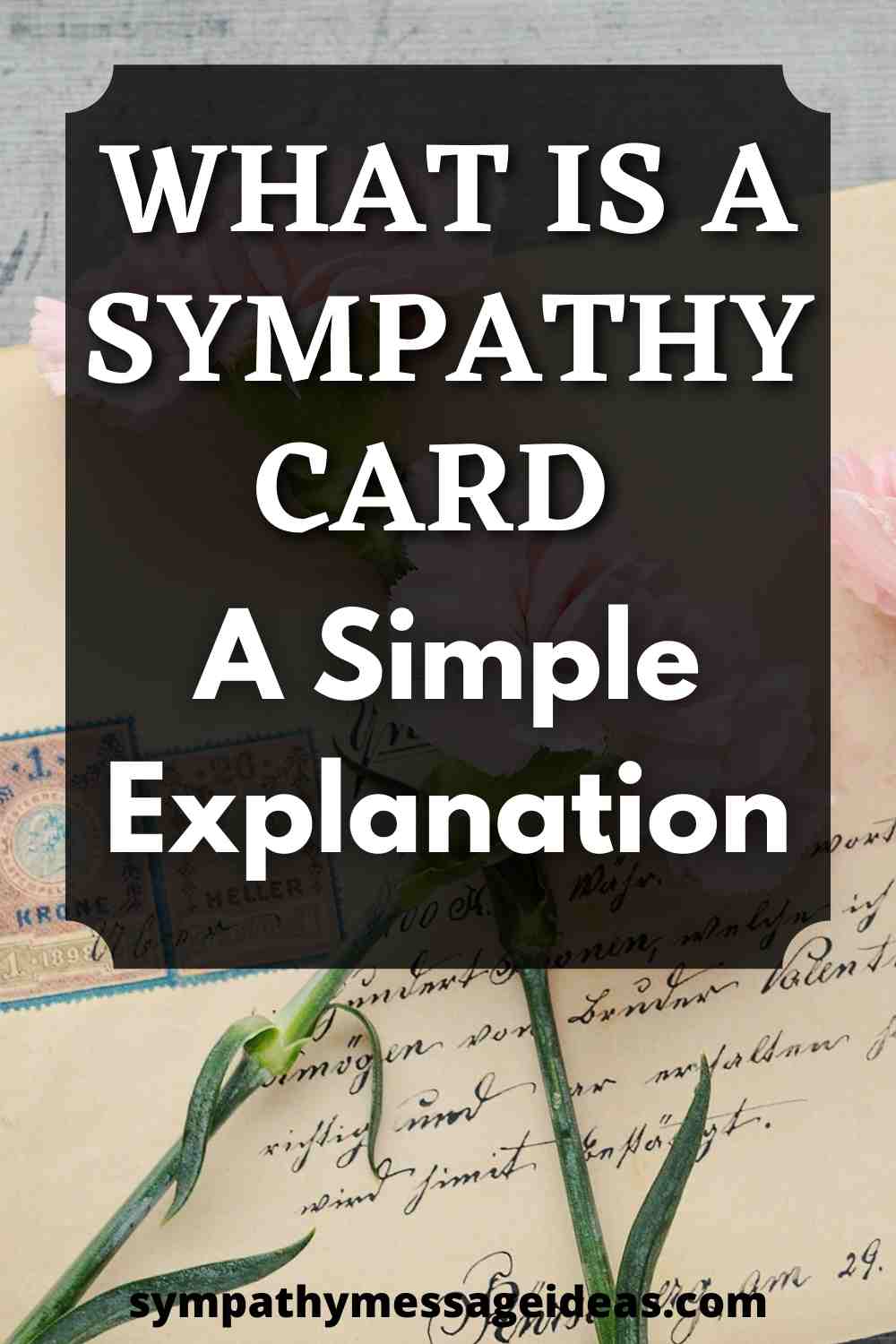If you know someone who has lost a loved one then you are probably aware that sending a sympathy card is a kind thing to do. But you might also be wondering: what is a sympathy card?
Not everyone is absolutely sure what a sympathy card is and why you should send one. Or where the tradition for sending them started.
So if you’re not exactly sure what a sympathy card is and how and why to send one then keep reading.
What is a Sympathy Card
A sympathy card is a greeting card that you send to someone after they have experienced a loss. It will usually contain a message of sympathy or condolence that says how sorry you are for their loss.
The message you choose will usually reference whoever passed away and may reflect on what they meant to you. Sympathy messages can be short and brief or contain longer sentiments and even stories of the deceased.
Sympathy cards can be sent or given to family members and close friends through to colleagues and acquaintances we don’t know very well. All will appreciate the gesture of receiving a sympathy card and message.
What is the Difference Between a Sympathy Card and a Condolence Card?
There isn’t really any difference between a sympathy card and a condolence card. They are both cards sent to those grieving a loss to express your sadness and sorrow.
The words “sympathy” and “condolence” mean different things, though. Condolences are specific expressions of sympathy for when someone has experienced something painful or bad. It is usually after a death but could be for the loss of a job or breakup of a relationship.
Sympathy is a feeling that we experience. We feel sympathy when something bad happens to someone, like those mentioned above – loss of a job, relationship, a death etc. These major events that cause people pain and upset illicit sympathy from both those who knew them and even those who didn’t.
READ MORE: Empathy vs Sympathy: The Difference Explained Simply
Why do we Send Sympathy Cards?
We send sympathy cards because we want to show we care about those grieving a lost loved one. After losing someone it can be such a painful and lonely time. So having friends and family reaching out with a thoughtful message or words in a sympathy card is going be warmly received and appreciated.
Sending a sympathy card also demonstrates you’ve put some effort into showing you care. It’s very easy to send a quick text message or put something on Facebook.
But picking out a sympathy card (or hand making your own) and handwriting a message before posting or delivering it to the bereaved is a clear sign of you thinking of them. It may not be a huge gesture but it will mean a lot to those grieving.
Especially now that so much is done online or digitally, a sympathy card may seem like a throwback but the fact that it’s a tangible keepsake the family can hold and read makes it extra special. Some families even keep the notes, cards and letters they received as a reminder of their passed loved one and how many people truly cared about them.
When do you Send a Sympathy Card?
You should send a sympathy card after a death. Ideally the sooner the better. Try to get the card to the family of the deceased within a few weeks of them having passed away.
This isn’t set in stone though. If for some reason you can’t get your card to them within the first few weeks that doesn’t mean you shouldn’t send one. You can’t really be too late with sending a sympathy card.
READ MORE: Etiquette Tips when Sending a Sympathy Card
When Should you Not Send a Sympathy Card?
If too much time has passed, and too much would be many, many months (even years), then it might be seen as a little odd to send a sympathy card so late. We never recover fully from losing someone but people do eventually move on. So receiving a sympathy card so late would be a little strange.
How do you Give Someone a Sympathy Card?
If you prefer to give someone a sympathy card rather than send it then you can do so. Hand delivering a note or sympathy letter will be seen as a touching gesture by the bereaved.
You can accompany your sympathy card with a gift or flowers. Flowers could be sent by a florist or flower delivery service and would likely have a note to go with them. A gift may also have a note that the company you bought it from includes.
Alternatively you can have the flowers or gift sent to yourself and then buy a card separately before delivering them together.
Where did Sympathy Cards Come From?
Greeting cards can be traced back to Ancient China and Egypt, although they didn’t really become a part of European culture until into the 1500’s. The history behind sympathy cards is more recent however.
Originally sympathy cards were just death announcements that may have contained “in loving memory” or some variation of that at the end. These cards from the Victorian era were almost like tickets as they were required to attend the funeral, rather than actually showing any sympathy for the loss.
Over time these sympathy cards became what we know today. Hallmark, probably the best known card maker, began producing sympathy cards in the 1920’s.
As technology has moved on so has the way in which we express sympathy. eCards and emails have become popular ways of sending condolences as well as text messages.
However hundreds of millions of sympathy cards are still sent every year. They relish extremely popular amongst those sending and receiving them.
Are Sympathy Cards a Good Idea?
Yes, they can offer comfort and support to those coping with the grief of losing someone. Receiving a card that shows how much the deceased was loved and knowing you have friends or family to offer support if you need it is very reassuring.
It’s not so much the card itself but the thought behind it. Loneliness after a loss is very common and so it’s important to make it clear that those dealing with their grief needn’t do so alone. A sympathy card can do this.
Conclusion
Hopefully you’re now more familiar with sympathy cards, their history and why we send them.
They are a really loving gesture and you should never feel always about sending one. Whoever is grieving a loss will cherish receiving a thoughtful sympathy card.




